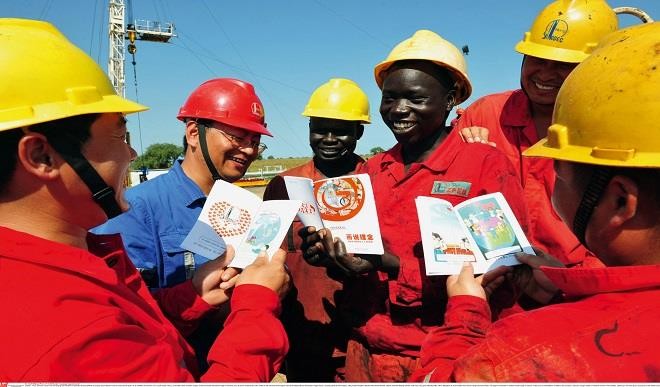Africa and China’s advanced manufacturing technology
According to the New York Times of 8 February 2017, China’s foreign reserve three years ago was four trillion US dollars, or $4,000,000,000,000.00, in figures. Converted to the Nigerian Naira, assuming the dismal effective black market exchange rate of 500 Naira to a dollar, this amount of reserve is N2,000,000,000,000,000.00. This is a huge sum […]


According to the New York Times of 8 February 2017, China’s foreign reserve three years ago was four trillion US dollars, or $4,000,000,000,000.00, in figures. Converted to the Nigerian Naira, assuming the dismal effective black market exchange rate of 500 Naira to a dollar, this amount of reserve is N2,000,000,000,000,000.00. This is a huge sum of money by any measure, the magnitude of which should have driven the value of the renminbi (the Chinese currency) up against other currencies. (However, the Chinese have prevented their currency from rising, apparently to help its local manufacturing companies compete abroad.)
China’s fortune has been taking a strong hit in the past of couple of years. On 7 February 2017, China’s central bank reported that its foreign exchange reserves had slipped to $2.9 trillion, down from the $4.0 trillion. This is a reflection of the slowdown in the growth of the country’s economy. As a result of the slowing economy, companies and wealthy individuals in China are reportedly sending their money out to countries with more stable economies. Falling renminbi is an expected outcome of continued slowdown in the economy, but the Chinese will not want to see that happen. According to the New York Times article, “the dwindling reserves are a sign of China’s efforts to keep money in the country by protecting the renminbi’s value.” “The era when the world rushed to invest in China to build factories or apartment buildings – generally, to get a piece of the action – is fading,” the newspaper states. Yes, you could see this everywhere at the time: virtually everything you saw anywhere, including in the US, was “Made in China.” However, this is changing as many western countries, particularly the US, are forging a new sense patriotism that will help keep the jobs “at home.” This is one of the campaign promises that got Donald J. Trump elected as the president of the US last November.
China’s excellence in manufacturing may help the country pick up the slack, particularly through the developing countries, where the availability of infrastructure is as scarce as the local knowhow. In a New York Times article on 8 February 2017 entitled “Joyous Africans Take to Rails, With China’s Help,” Andrew Jacobs states that China earns approximately $50 billion a year in financial transactions in Africa. A visit to many African countries will convince you that China is probably having a good business in Africa: construction projects are everywhere – airport projects in Nigeria, railway projects in Ethiopia, and perhaps hundreds of other major construction projects all over the continent. With proper management by the host African countries – including the minimization of corrupt practices – the countries can benefit greatly from China’s manufacturing knowhow.
My first visit to China was in 2012. One thing that struck me as a visitor to China from New York is the train system. Simply put, it is superb. The aesthetics are quite pleasing to eyes, and the structures of the trains appear to have gone through impressive engineering designs fit for “a revolution in manufacturing” – if there is such a phrase. Clearly, the trains look more modern and capable than the ones we have in the US. Moreover, China has these high-speed trains that could travel at speeds as high as 400 kilometers per hour. These trains are quite comfortable and have very pleasing acoustic signatures – that is, they do not generate too much noise. (The high-speed trains in China are probably only matched by the KTX in South Korea, which travel at comparable speeds, are clean and quite well maintained and managed.) Incidentally, and surprisingly, we do not yet have high-speed trains in the US – a situation that is probably attributable to capitalist reasons than to the lack of technology. After all, trains have been in use in the US for almost two centuries. A support for my capitalism theory is the fact that both the train systems in China and South Korea are government-owned; this would have been too “social” in the US! (Note that Chinese-built subways will soon appear in the US as well.)
Chinese technology does help to improve the lives of African people. A story in the times article alluded to above is particularly touching. The project in this case is a modern railway system; the customer is Djibouti, located in the Horn of Africa. It’s a 466-mile railway line. While the project will cost Djibouti $4 billion, the country does not have to front load the amount, as China provides the financing. With this new way of traveling in Djibouti, a three-day trip by truck is cut to half a day by train. Even though this is supposed to be a business relationship between China and Djibouti, it almost sounds like social responsibility on the part of China. This is quite refreshing indeed.
